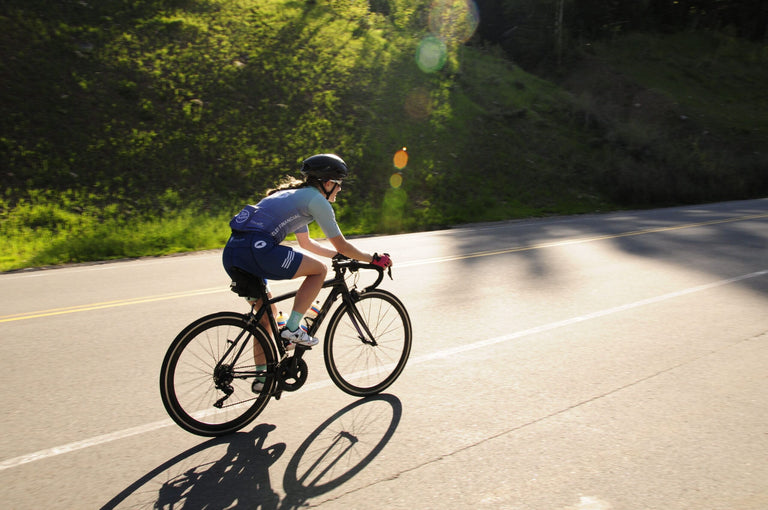Women are led to believe when their biological clock starts ticking down they have to accept feeling tired, and weak. As they near menopause, they may also notice it becomes easier to accumulate fat in the mid-section, lethargy creeps in, and exercise just feels harder. But what if I told you you didn’t have to give up on health and fitness goals because of your age?
The truth is that age-related changes in our body do not have to slow us down and take away our strength and power. In fact, we can even build muscle into later adulthood.
With proper nutrition and training, this slowdown can be prevented and even reversed.
You may lament that you haven’t changed your training or nutrition practices, and therefore, don’t see why you’re losing strength, power and muscle definition. Afterall, if it worked in the past, why isn’t it now?

Your lack of energy is most likely a sign that you need to begin fueling and training differently. As we age our catabolism to anabolism ratio decreases. This means that your body is breaking down muscle faster than it is building it. If you are not fueling and training to supplement these changes, you could very well be going about business as usual, doing everything “right,” and still see a decrease in your performance.
These changes are largely due to changes in our hormones as we age.
How Hormonal Changes Impact Metabolism
Estrogen levels will fluctuate and eventually decline through menopause. This hormone is most obviously responsible for reproduction, but it vastly affects how we store fat, our metabolism, and how we respond to and recover from exercise. As estrogen levels decline, your metabolism will also decline. Because of this, your body pumps out more insulin, which triggers fat storage (1). Metabolizing fructose gets harder with age, increased sensitivity to carbs and digestion increases fatty acids in the blood after fructose, which adds to increased triglycerides and even insulin resistance (5).

DHEA, an adrenal hormone and the precursor to testosterone and estrogen, declines as we age. This change increases our sensitivity to glucose, and may contribute heavily to stored belly fat (1)
Another hormone that contributes to decreased performance is cortisol. Stress and poor sleep can cause an increase in cortisol, which can interrupt other hormonal processes in the body. The occurrence of hot flashes can diminish our sleep quality, further adding to the increase.
Our blood vessels also become less compliant as we age (2). Every person is unique in their genetic makeup and will experience menopause symptoms differently. This can be frustrating and exhausting, but luckily there is something you can do about it.
"Research shows that when endurance athletes slow down with age, a major reason why is because their muscles simply aren’t contracting as quickly and as powerfully as they used to."
Your Role in Prevention
Our body does go through hormonal changes that affect us on a mental and physical level, but that does not mean that you have to stop performance. We can make lifestyle choices that can help prevent or fix these age-related changes in performance and muscle mass:
- Watch your sugars. Metabolizing fructose (fruit sugar) gets harder, and artificial sugars and sweeteners may play a role in GI distress (5). Focus on adding more carbs from vegetables and adding in intra-workout fuel and hydration that leaves out fructose (glucose or sucrose are better options) or artificial sweeteners.
- Increase protein and pay attention to protein timing and quality. Aim to get at least 25% of calories from protein. Get 5 to 10g of BCAA’s before and after hard strength workouts or cardio sessions. Leucine is especially important for recovery and helpful for decreasing brain fog, as it crosses the blood brain barrier to support the Central Nervous System (6).
- Prioritize strength & HIIT training – Add 2x to 3x a week to prevent muscle loss and weakness. After menopause, speed and strength of muscle contraction tend to diminish (1,2).
- Prioritize sleep and sleep quality – Aim for 7 to 8 hours a night. If hot flashes are keeping you up try valerian root, black cohosh, and ice cold tart cherry juice 30 min. before bed (7,8). This mix can help get to sleep faster and stay asleep.
- Supplement what you can’t get in your food – Athletes are highly likely to be low in vitamins and minerals vitamin D, magnesium, B12, or collagen (10,11,12). Additionally, arginine and beta-alanine (ingredients in Gnarly’s Creatine and Gnarly Pre-Workout) can help with blood flow and reduce feelings of fatigue(9).
Some benefits from these lifestyle changes will be noticed immediately, while some may take longer to see and feel. Once you’ve been implementing these tips consistently for 8 to 12 weeks, you should notice a difference in your performance, energy and body composition.
Conclusion
Aging is a beautiful part of being human. While your female physiology will change throughout your lifespan, you do not have to give up on your athletic pursuits. Smart training and nutrition that changes with your body can keep you fit, fast and clever well into your later years.
Works Cited:
- Bea, J. W., Cussler, E. C., Going, S. B., Blew, R. M., Metcalfe, L. L., & Lohman, T. G. (2010). Resistance training predicts 6-yr body composition change in postmenopausal women. Medicine and science in sports and exercise, 42(7), 1286–1295. https://doi.org/10.1249/MSS.0b013e3181ca8115
- Human Kinetics. “Strength Training During Menopause Offers Multiple Benefits, Action Plan for Menopause 2005.” https://us.humankinetics.com/blogs/excerpt/strength-training-during-menopause-offers-multiple-benefits
- Burd, N. A., Tang, J. E., Moore, D. R., & Phillips, S. M. (2009). Exercise training and protein metabolism: influences of contraction, protein intake, and sex-based differences. Journal of applied physiology (Bethesda, Md. : 1985), 106(5), 1692–1701. https://doi.org/10.1152/japplphysiol.91351.2008
- Fonseca, Header, Daniel Moreira-Goncalves, Rita Ferreira, Fransisco Amado, Mario Vaz, and Jose Duarte. “Ar1 Estrogen Loss Leads to Reduced Motor Activity: Neural Versus Muscular Role?” Medicine and Science in Sports and Exercise 42, no.10 (October 2010): 64-65.
- Macdonald I. “Influence of Fructose and glucose on serum lipid levels in men and Pre- and Postmenopausal Women.” Am J Clin Nutr. 1966 May;18(5):369-72. doi: 10.1093/ajcn/18.5.369. PMID: 4951521.
- Greendale, G. A., Derby, C. A., & Maki, P. M. (2011). Perimenopause and cognition. Obstetrics and gynecology clinics of North America, 38(3), 519–535. https://doi.org/10.1016/j.ogc.2011.05.007
- Pigeon, W. R., Carr, M., Gorman, C., & Perlis, M. L. (2010). Effects of a tart cherry juice beverage on the sleep of older adults with insomnia: a pilot study. Journal of medicinal food, 13(3), 579–583. https://doi.org/10.1089/jmf.2009.0096
- National Sleep Foundation. “Menopause and Sleep.” January 22nd 2021. https://www.sleepfoundation.org/women-sleep/menopause-and-sleep
- Trexler, E. T., Smith-Ryan, A. E., Stout, J. R., Hoffman, J. R., Wilborn, C. D., Sale, C., Kreider, R. B., Jäger, R., Earnest, C. P., Bannock, L., Campbell, B., Kalman, D., Ziegenfuss, T. N., & Antonio, J. (2015). International society of sports nutrition position stand: Beta-Alanine. Journal of the International Society of Sports Nutrition, 12, 30. https://doi.org/10.1186/s12970-015-0090-y
- Mirian de la Puente Yagüe, M., Collado Yurrita, L., Ciudad Cabañas, M. J., & Cuadrado Cenzual, M. A. (2020). Role of Vitamin D in Athletes and Their Performance: Current Concepts and New Trends. Nutrients, 12(2), 579. https://doi.org/10.3390/nu12020579
- Knechtle, B., & Nikolaidis, P. T. (2020). Vitamin D and Sport Performance. Nutrients, 12(3), 841. https://doi.org/10.3390/nu12030841
12. Heffernan, S. M., Horner, K., De Vito, G., & Conway, G. E. (2019). The Role of Mineral and Trace Element Supplementation in Exercise and Athletic Performance: A Systematic Review. Nutrients, 11(3), 696. https://doi.org/10.3390/nu11030696






